
The so-called chicken fleas are widespread parasites of birds, parasitizing not only on chickens, but also on many other birds. Often they are found even on parrots and canaries, but they cause the main harm to poultry farms, where, when breeding in large numbers, they can lead to the death of birds, a decrease in the number of eggs and the spread of dangerous infectious diseases.
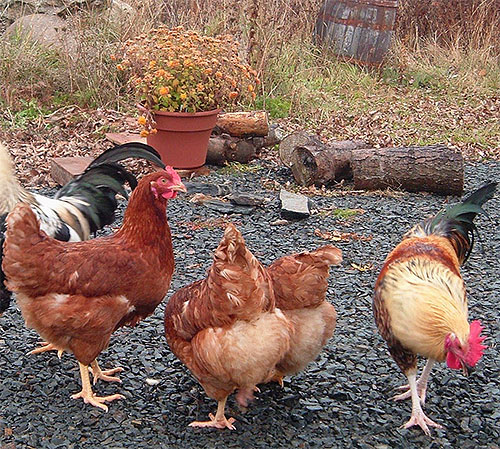
Due to the fact that these parasites have many specific biological features, getting rid of chicken fleas can be somewhat more difficult than getting rid of fleas in dogs or cats. Quite specific is the treatment of chickens for fleas. Nevertheless, all these procedures have already been worked out quite well today, and therefore, for a theoretically trained farmer, the fight against chicken fleas usually goes quickly and successfully.
Appearance and features of parasites
The chicken flea in appearance differs little from other fleas, including mammalian fleas. It has the same dark shiny body about one and a half millimeters long and devoid of wings, it also jumps well. Only under a microscope, fleas in chickens are distinguished by the presence of clearly visible antennae and developed eyes.

In general, bird fleas have a slightly higher, hunched body.Because of this, they are somewhat more compressed from the sides than the already “flat” fleas in cats and dogs, and therefore, even when catching the parasite with your fingers, it is almost impossible to crush it.
On a note
Additional strength to the body of a flea is given by a strong chitinous cover. In most cases, it protects the insect from accidental death under the claws or beak of a bird trying to scratch. In general, in the plumage of birds, fleas are safer than in the fur of animals, they multiply faster here and infect birds more intensively.
Most often, fleas in chickens catch the eye when they crawl out of the plumage to feed on bare skin near the beak and eyes, as well as on the legs. The same parasites that swarm in the plumage are practically invisible and can attract attention only by the fact that they greatly annoy the bird and make it behave very restlessly. In open areas of the body of a bird, chicken fleas look like small dark growths, like moles on a person, and one by one they do not even attract attention.
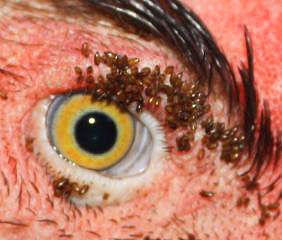
On a note
Chicken fleas are well distinguished from another common ectoparasite of poultry, the red bird mite, by their ability to jump. In a tick, the body has a pronounced red color (in fleas it is brown), and the legs are set wide apart, so that even with its tiny size they are clearly visible. Treatment for fleas and ticks involves the use of completely different means, and in many cases it will not work to get rid of some parasites with drugs for others.
The photo below shows fleas in chickens. Such a number of parasites on a small area of the skin is typical for especially neglected cases, in which the birds themselves become exhausted, often ceasing to rush:
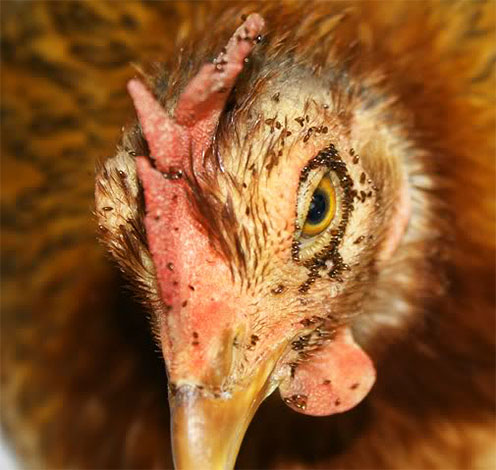
A separate photo shows bird fleas under a microscope - they have a noticeably high body and well-developed hind legs:
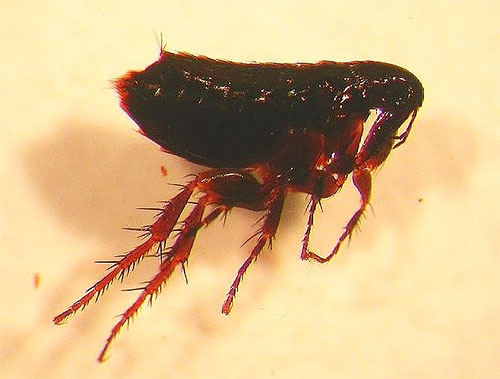
Further, the photo shows a parrot affected by chicken fleas - the parasites themselves are not visible in it, but the feathers plucked out by the bird on the stomach are visible.
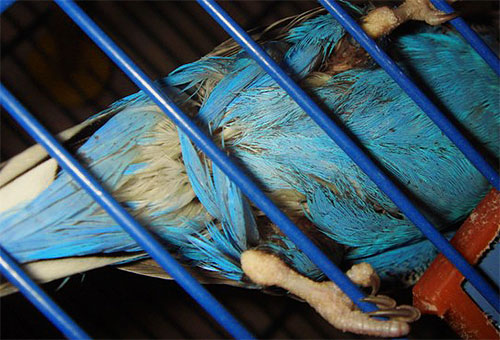
Lifestyle, nutrition and reproduction of the chicken flea
Chicken fleas differ from fleas in mammals by high requirements for the microclimate in their habitat: the optimum temperature for their life is 40-41°C. Such a temperature can only be provided on the body of the birds themselves, under the feathers, and even in the nest under the incubating chicken, the fleas will feel uncomfortable. For this reason, chicken fleas almost never leave the bird's body.
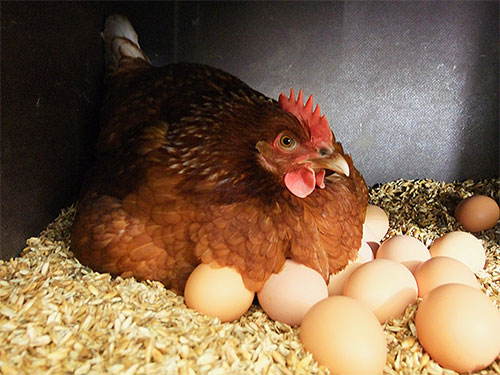
Bird fleas can only bite through the thin skin of birds. For this reason, cases of parasitism of these insects on mammals, including humans, are extremely rare. In rare cases, fleas in a chicken coop can bite a person, but they are not able to constantly live and breed far from birds. Therefore, chicken fleas in the house are usually present only in bird cages.
It is interesting
Even a bite of a person by a bird flea will not allow it to get enough: the blood vessels in humans are generally deeper than in birds, and most often the parasite, unadapted to such conditions, after one bite, simply leaves to look for another victim. Therefore, chicken fleas do not parasitize a person and bite him only in extremely rare cases.
Despite such attachment to the owner, fleas do not know how to breed on the body of a bird. The female parasite forcefully pushes a portion of eggs out of her body (about 3-6 pieces every day), which scatter over a long distance and fall on the floor of the chicken coop or in the bird's nest.
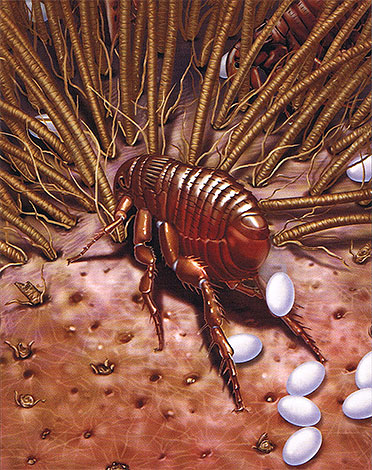
Here, worm-like larvae hatch from flea eggs, which feed on dry bird blood in the excrement of adult fleas, rotting pieces of organic matter and grass, bird droppings, and after a few weeks turn into motionless pupae. At the pupal stage, the insect is until a bird appears near it for a long time - this usually happens when the pupa is in the old nest, and only after incubation begins again in the nest, many young and hungry fleas come out of the litter . Obviously, flea pupae can lie dormant for many months while the nest waits for its summer lodgers.
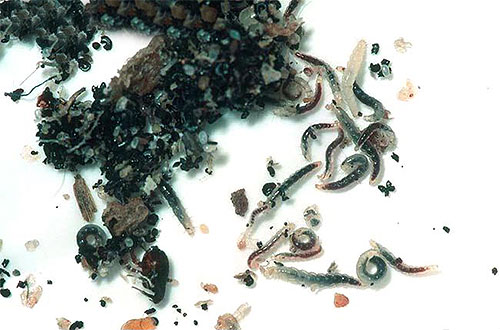
On a note
The lifespan of an adult bird flea is several months, sometimes more than a year. It is not surprising that fleas often “fly” on birds to a new nest and lay their eggs there. As a rule, several generations of fleas manage to appear in one nest in one season.
In chicken coops, the situation is especially difficult. If a bird under natural conditions after the chicks leave the nest leaves a place infected with parasites, chickens in the hen house do not have such an opportunity. Accordingly, the birds are constantly suffering, and the development and reproduction of fleas proceeds without interruption at an increased rate. That is why the fight against fleas in the chicken coop should be especially diligent and this fight should begin immediately after the detection of parasites.
Why are chicken fleas dangerous?
Fleas in birds are dangerous primarily because they constantly irritate the bird, lead to nervous scratching, and make it pull out feathers.With severe infection, chickens can develop anemia, sometimes they stop eating and die from exhaustion. Therefore, the treatment of chickens for fleas should begin as soon as the parasites have been detected.

Even more dangerous for both birds and the person working with it is the ability of fleas to carry serious diseases. First of all, these are brucellosis, salmonellosis, trypanosomiasis, sometimes pathogens of plague and encephalitis were found in chicken fleas. On backyard chicken coops, the likelihood of birds becoming infected with such diseases is especially high, since wild sparrows fly into aviaries with chickens, pigeons graze around them, fleas from which may well get into the chicken coop.
Review
“This has never happened before, and this summer they began to notice fleas in chickens. And the further, the more. Several Belarusians stopped rushing, and the Orpingtons turned out to have a lot of this infection. One mother hen quit sitting on eggs, we wondered why, we did not know what treatment to apply. And when we carefully examined the nest, we were simply horrified - it was directly teeming with parasites, we had to throw out all the eggs (as many as 28 pieces). Please tell me how to get rid of chicken fleas so that it is effective and safe.
Ivan Petrovich, Nizhny Novgorod
Bird fleas are dangerous to humans in that they are potentially capable of being carriers of pathogens of many diseases and helminth eggs. There are few chances of being bitten by a flea with the causative agent of the same encephalitis in a chicken coop, but there is always a chance. But almost all fleas carry worms, and regular bites of parasites on the body are a reason to drink a course of helminth remedy.
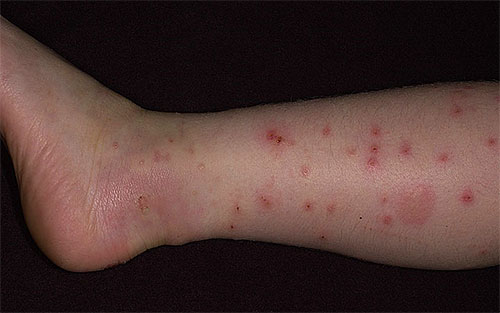
On a note
In general, free-range chickens who are able to leave their enclosures are less likely to become seriously infested with fleas and more easily tolerate such parasitosis. On walking, they have the opportunity to clean the plumage in anthills or dust, and in general, often leaving the infected area, they significantly reduce the intensity of flea reproduction in the chicken coop.
However, if fleas in chickens still start up, the birds need to be treated. With parasites - to fight, and the chicken coop - to carefully clean the larvae and pupae of insects.
Means for the fight against chicken fleas
To remove fleas from chickens in a small household or from ornamental birds at home, you can use specialized flea drops for cats or dogs. If such a remedy for chicken fleas does not enter the bird's digestive system, it does not cause any side effects in it and is quite safe.
In large farms, preparations in the form of powder or solution ampoules based on synthetic pyrethroids, substances that have a nerve-paralytic effect on the insect, are very popular and help to get rid of chicken fleas.
Of the drops, Stronghold, Frontline, Leopard, Advanced are the most effective. Optimal in terms of price-quality-safety drops from fleas Dana.
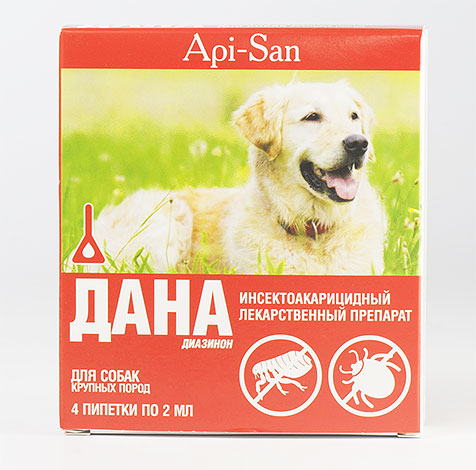
For the treatment of chicken coops, you can use almost any insecticidal agents that are used to combat cockroaches, bedbugs and fleas in residential premises - concentrates and microencapsulated preparations such as Get, Tsifox, Cucaracha, Tetrix, Karbofos.Household insecticides in spray cans, for example, Raptor, Raid, Combat, are less convenient for treating chicken coops and, on average, less economical.
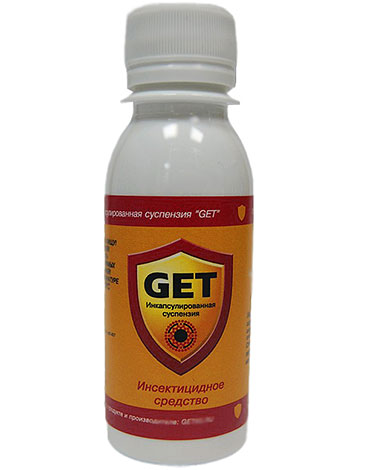
When processing chicken coops, it is necessary to take into account some specifics of both the fleas themselves and the premises being processed.
On a note
Preparations used to get rid of fleas of other pets are well suited for owners of small poultry houses with up to 10-20 chickens. To process a larger number of birds, you need to use special tools.
What to do if there are a lot of chickens?
For the treatment of industrial chicken coops and premises that contain several tens or hundreds of birds, the following preparations are usually used:
- Butox is a product based on the insecticide Deltamethrin. The drug is quite effective and allows you to fight fleas even with serious infestations. Its main advantage is the ability to easily prepare large volumes of insecticidal solution. Butox is sold in 1 ml ampoules, and to remove fleas, the contents of each ampoule should be dissolved in 4 liters of water. To apply the product to the plumage of birds, special sprayers are usually used. Butox can also be used to process poultry houses from which all birds have been removed. The concentration of the agent in the solution for treating the chicken coop is the same as for applying the agent to the plumage of the bird.
- Another widely used drug is Deltamethrin powder. 100 grams of this powder contains 50 mg of Deltamethrin itself and a special inert filler powder. The product is simply sprayed onto the plumage of the bird and rubbed into the skin. With a special duster, powder can be used to treat large chicken coops without poultry.After that, it is important to withstand the room for about several hours, or better, days without cleaning and settling in order for all flea larvae to be poisoned by the agent. Before settling chickens in the room, you should change the bedding in cages or aviaries, remove litter, carry out wet cleaning and thoroughly ventilate the chicken coop.
Important!
When treating chickens with Butox and Deltamethrin powder, it is important to control that the agent does not get into their respiratory tract or eyes. You can not treat chickens by simply spraying the product in the chicken coop - each bird should be treated separately.
Use Deltamethrin and Butox powder with rubber gloves and a respirator.
We remove bird parasites correctly
In order to rid chickens or ornamental birds of fleas, it is necessary to treat each bird with anti-flea drops. To do this, a few drops of the product are dripped onto the back of the head from the bottle, which are then carefully rubbed into the skin. In the future, through the subcutaneous blood vessels, the agent will spread throughout the body of the chicken, and the fleas that suck its blood will die.
When using Deltamethrin powder, the agent is applied to the entire surface of the bird's body, except for the head, and rubbed into the skin.
Important!
Do not eat eggs laid during the period of removing fleas from chickens. The insecticide penetrates the egg yolk with blood, and although it does not have a pronounced effect on the human body, it may well lead to various side effects.
The chicken coop itself must be treated after the chickens have been treated and rid of fleas.It is important not to clean or wash the chicken coop before processing - the garbage placed on the compost heap contains a huge number of flea larvae, which will quietly develop on the heap itself and in time infect fleas through the sparrows visiting the heap itself, and when it is close to the chicken coop - and simply "on its own ". You need to get rid of fleas in the chicken coop itself.
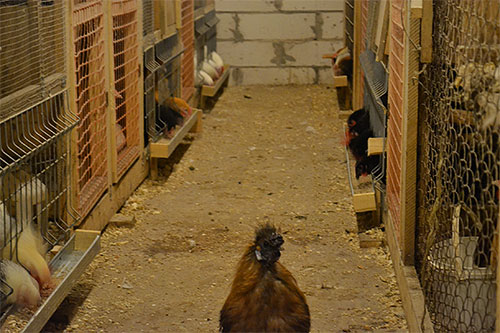
The chicken coop should be completely treated for fleas, with perches (they contain the maximum number of parasites), a layer of waste on the floor, feeders and nests. If there is too much debris on the floor, it can be loosened with a shovel or chopper and sprinkled with the preparation separately.
Chickens must be removed from the coop prior to processing. The flea drug is diluted in the right concentration with water and sprayed onto all surfaces in the chicken coop, after which it is left for several hours so that all parasites are poisoned. After that, all the garbage is taken out of the chicken coop, it is thoroughly cleaned, the floor is washed.
It is not always possible to get chicken fleas out the first time. For this reason, the treatment of the chicken coop should be repeated after two to three weeks, giving time for all surviving pupae to turn into adult fleas - at the pupal stage, parasites are the least susceptible to insecticidal preparations.
How to protect a chicken coop from fleas?
Getting rid of chicken fleas is only part of the task. It is much more difficult to prevent their reproduction in the chicken coop. There is one reliable and proven solution in practice and time - to constantly maintain cleanliness in the room. In this case, even if the parasites enter the chicken coop with new birds or stray sparrows, they will not reproduce here, since the larvae and pupae will be constantly removed from the premises.
Measures and technologies for the constant treatment of premises with insecticides have been developed only for industrial chicken coops, and in private subsidiary plots they turn out to be too laborious and unnecessary. Therefore, it is much easier and more reliable for farmers to simply regularly take out the garbage and droppings from the chicken coop, and pour fresh sawdust on the floor, instead of fighting fleas in chickens with chemicals.

You can additionally protect your chickens from blood-sucking parasites by laying brooms from fresh wormwood and tansy in the chicken coop - the smells of these herbs repel many insects, including fleas. Thanks to such measures, chickens will be more reliably protected by fleas.
Useful video about chicken diseases

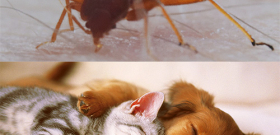
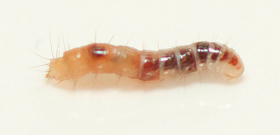
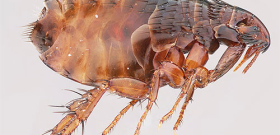
Remedy for chicken fleas -?